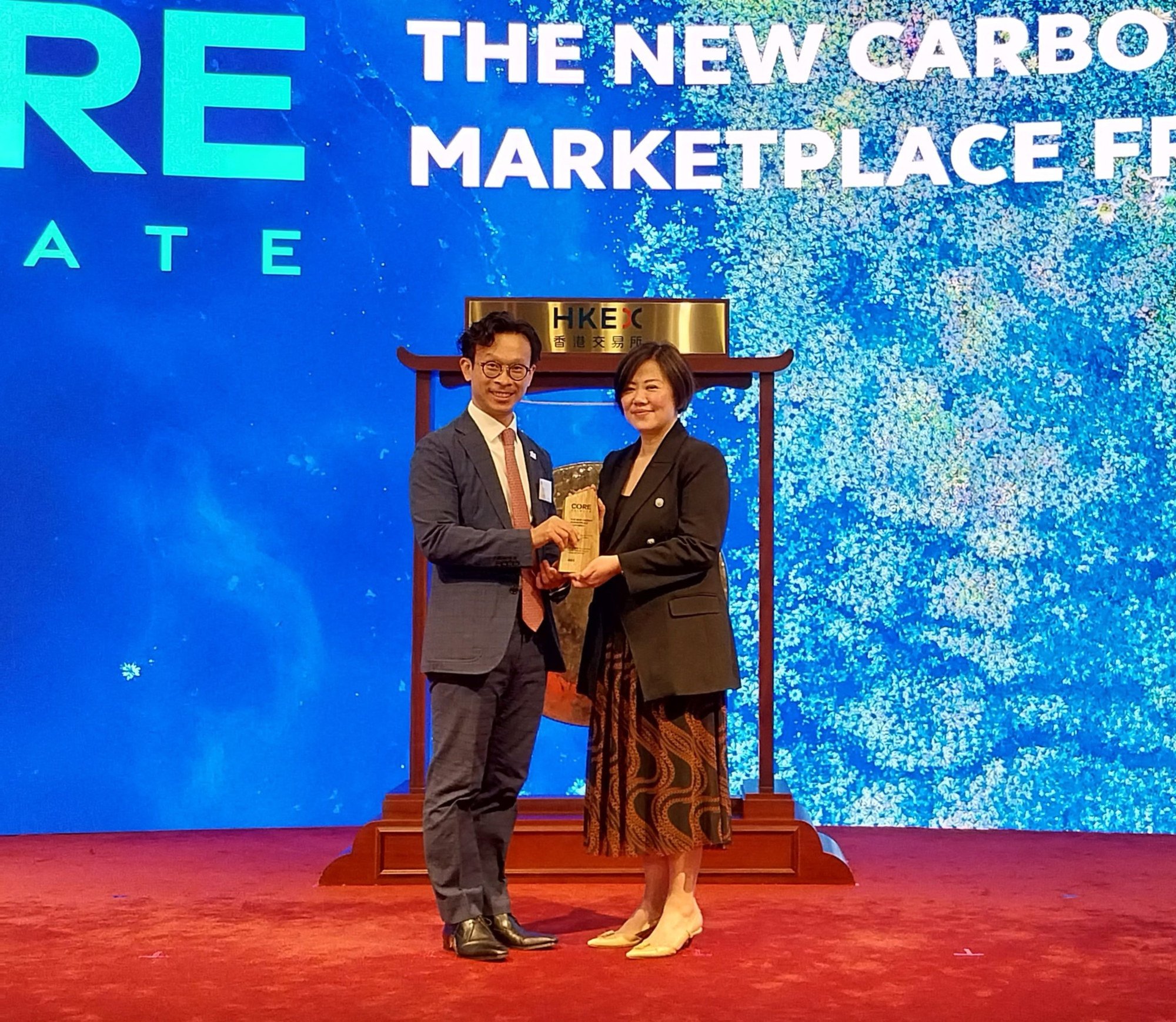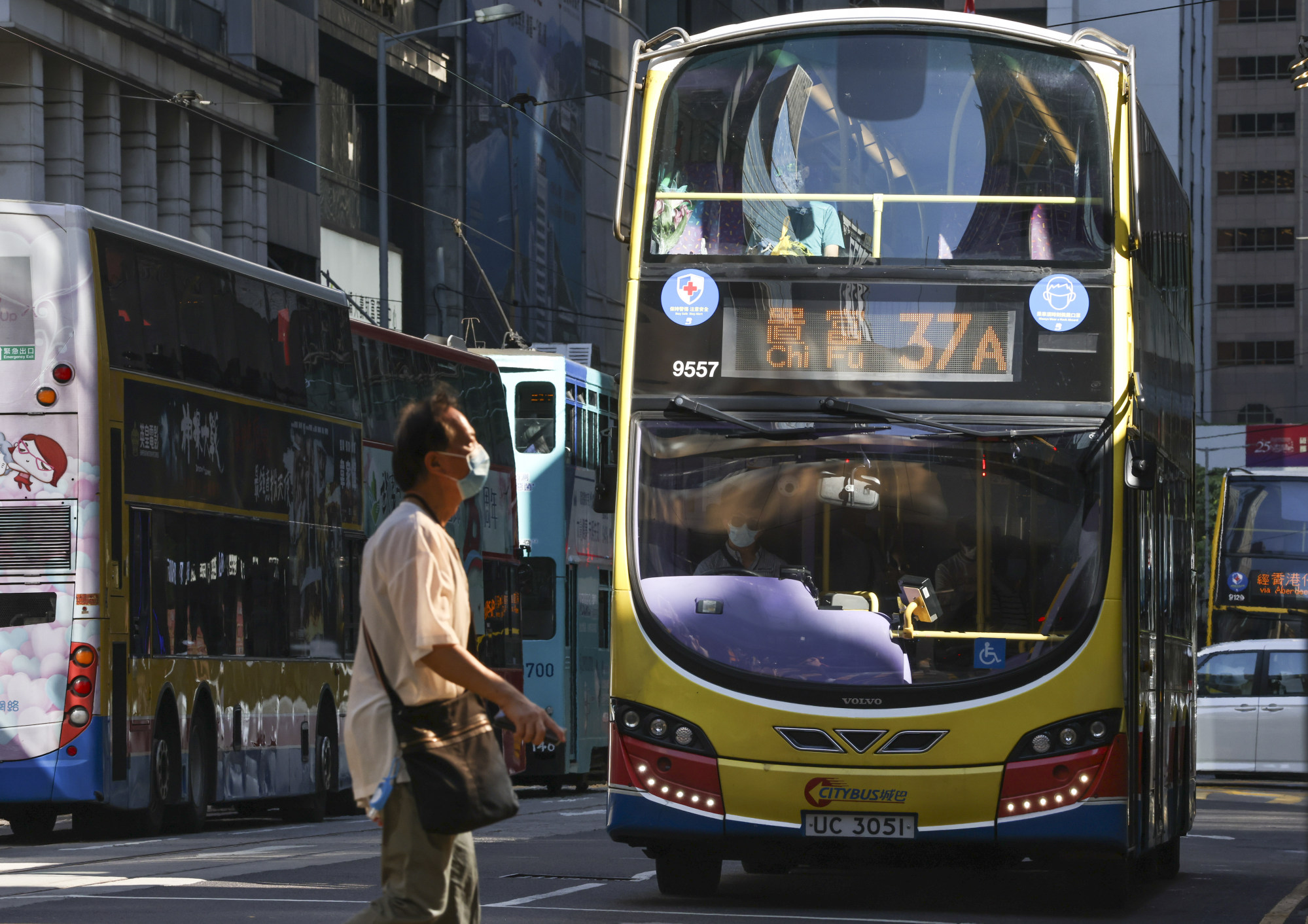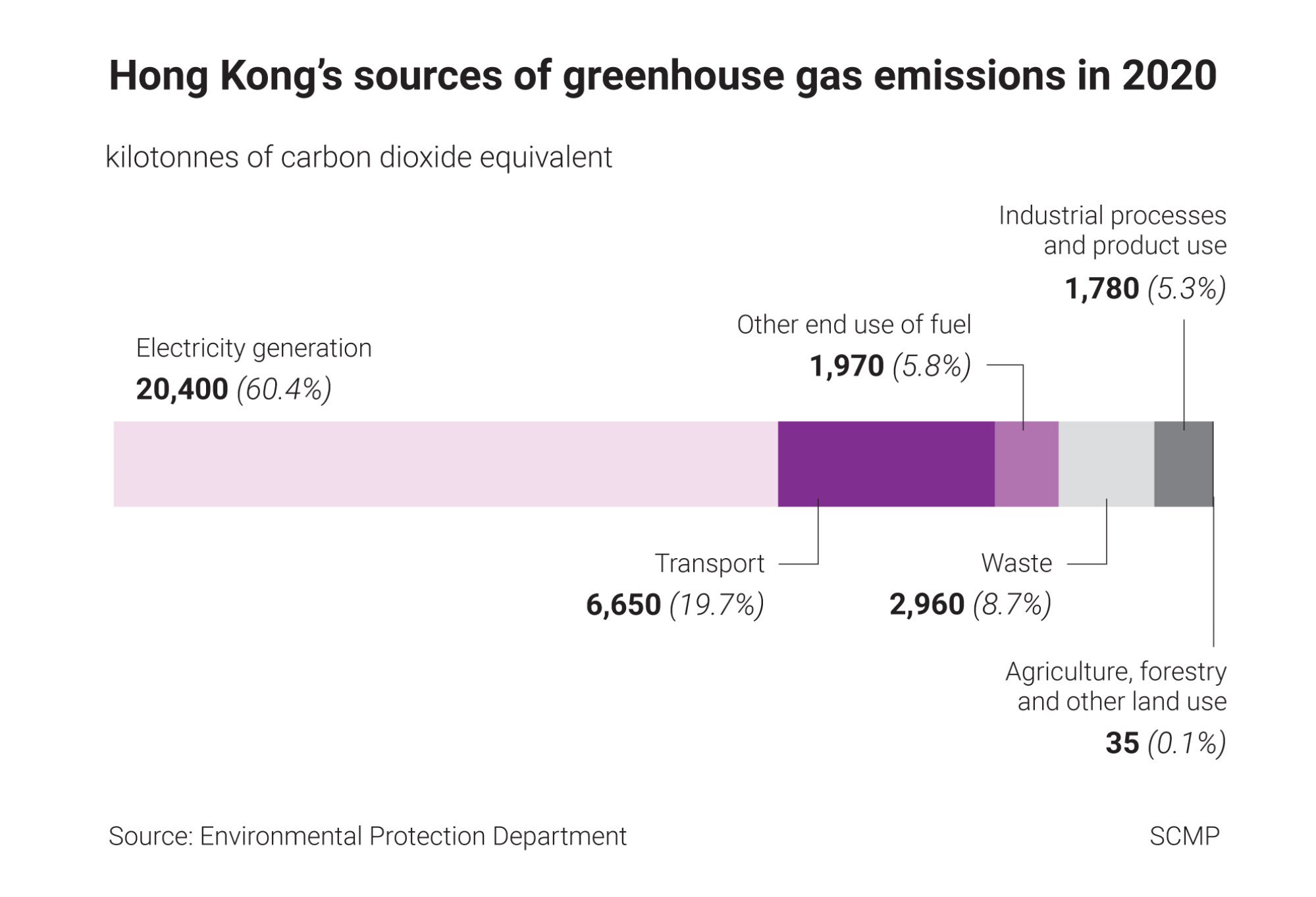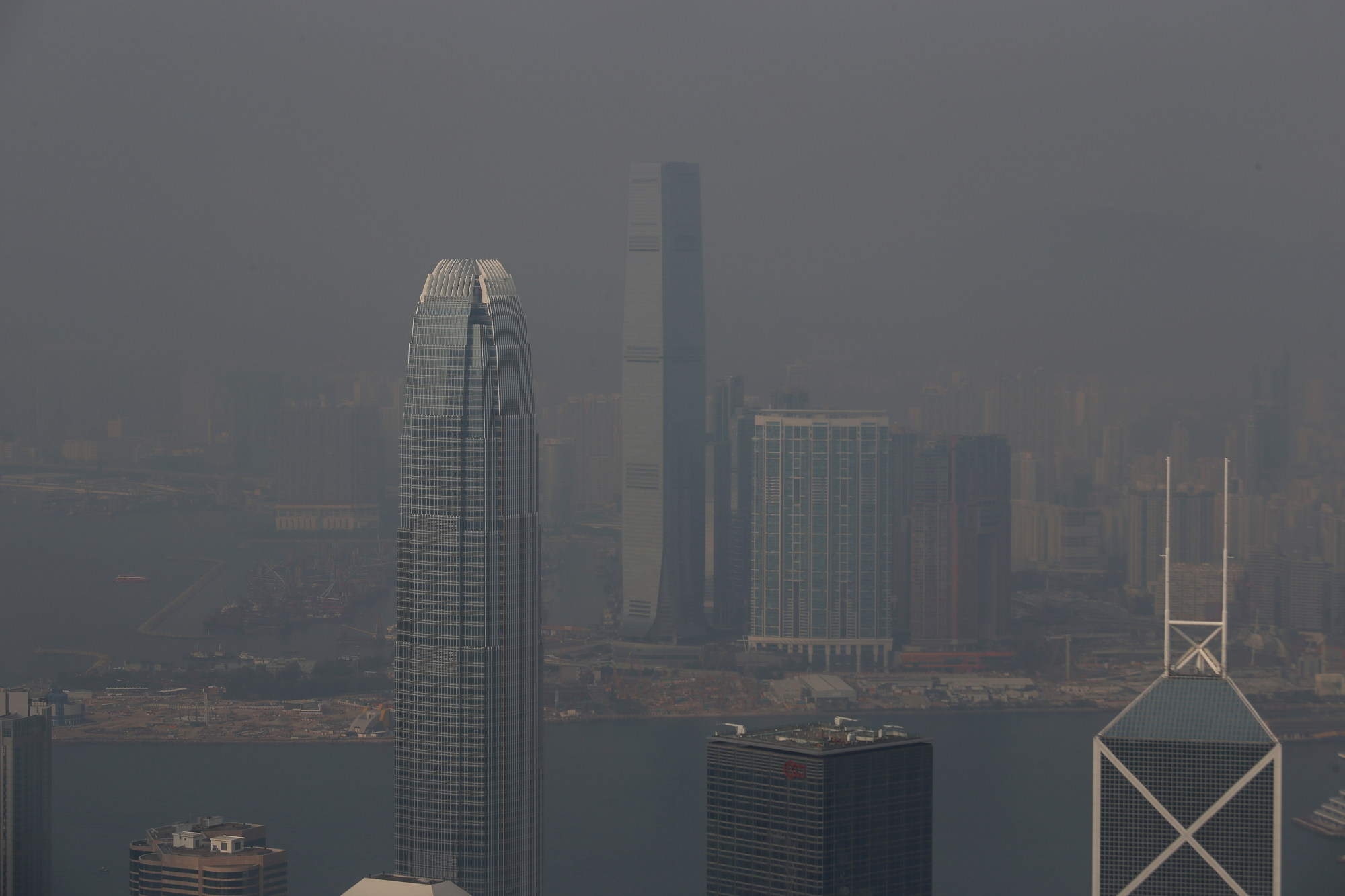
A year after Hong Kong’s first voluntary carbon credit market debuted with an optimistic ambition to “expedite the low carbon transition journey at scale”, that goal seems no closer to fruition.
Core Climate, the nascent trading venue launched by the city’s bourse operator Hong Kong Exchanges and Clearing Limited (HKEX), may one day achieve the vision articulated by its chairwoman Laura Cha Shih May-lung during its October 2022 launch. So far, a trio of factors has suppressed trading volume far below the potential.
A lack of links with carbon exchanges in mainland China has stymied the aspiration of functioning as a bridge between international funds and vast climate change mitigation opportunities in China – the world’s largest carbon emitter. Limited domestic demand and a global crisis of confidence over the quality of available carbon credits have compounded the growth challenge.
Billed as the only carbon marketplace that offers settlement in both Hong Kong dollars and yuan for international voluntary carbon credit transactions, Core Climate has recorded trading volume equal to only 900,000 tonnes of carbon dioxide reduction since its debut – a fraction of the 116 million tonnes traded last year on CBL, the world’s largest spot exchange for carbon credits, operated by San Francisco-based Xpansiv. And 400,000 tonnes of Climate Core’s volume came within about a month of its launch.
The track record so far has not fazed Glenda So, group head of emerging business and fixed income and currency at HKEX, who said Core Climate’s overall performance has met expectations.
“In our first year of operation in this market, our main goal was to build an ecosystem,” she said. “Besides trading volume, we have been building a client base, which has grown from just over 20 when it debuted to almost 80 today. It is quite encouraging.”

Glenda So (right), co-head of markets of Hong Kong Exchanges and Clearing, presented a trophy to Hong Kong and China Gas chief investment officer Alan Chan Ying-lung (left), at the launch ceremony of international carbon marketplace Core Climate on November 1, 2022. Photo: Handout
HKEX has high aspirations for carbon trading as part of Hong Kong’s ambition to be an international powerhouse for green and sustainable finance. The city was Asia’s largest arranger of green and sustainable bonds last year, with a 35 per cent market share.
So blames Core Climate’s scant trading volume on global factors, such as China’s weaker economic growth and the confidence crisis, which erupted over the quality of forestry-related carbon credits.
“It was inevitable that some impact was felt, including carbon trading prices which have fallen year on year,” she said. “There are multiple international initiatives that are ongoing which will help address the carbon quality issue.”
There are two broad types of carbon credits. Compulsory schemes impose caps on emissions; polluters that exceed their limits must buy credits from those that emit less than their permits. Voluntary credits are used to offset carbon footprints that companies cannot reduce economically in their own or their suppliers’ facilities. Mainland China has both types, while Hong Kong has no compulsory regime.
Cross-border trading of credits promises to channel funding from developed markets to projects in developing nations, which could reduce by up to US$250 billion the global cost of meeting the emission reduction targets that nations have committed to, according to the International Emissions Trading Association.
After two years of rapid growth, the voluntary market – worth US$2 billion in 2021 – slowed last year, the World Bank said in a report this month, as supply of new credits and demand from end users both fell slightly.

Buses run their routes in Sheung Wan. Zero Emissions Mobility Consortium Calls for Collaboration with Government on Decarbonisation of Hong Kong’ Public Road Transport. 26JUL22 SCMP /K. Y. Cheng
“Challenging macroeconomic conditions also impacted carbon credit markets … compounded by prominent public criticism of the integrity of some carbon credits and continued uncertainty around best-practice use of carbon credits by companies for voluntary purposes,” the World Bank said.
Voluntary credits typically trade via over-the-counter markets, where buyers and sellers make deals directly, without going through a centralised exchange or broker. Transaction prices and volumes are usually kept private.
“Currently the voluntary market is not regulated,” said Jennifer Wu, global head of sustainable investing at JPMorgan Asset Management. “There is no accountability. It is like the ‘wild west’ globally.”
Confidence suffered over the past year as a result of media reports that credits for certain forest conservation projects had been sold and claimed multiple times by both companies and governments towards their climate-mitigation efforts, vastly inflating the benefit, Wu said.
Reports also surfaced in Europe and Asia that some forest protection projects grossly overstated the areas prone to deforestation, or were undermined by a shift in emissions to areas outside the projects’ boundaries.
As a result, corporate demand for carbon credits fell last year for the first time since the mid-2010s and has remained soft this year, according to a report by research firm Sustainable Fitch last month.

The price of nature-based carbon credits plunged from almost US$15 per tonne of carbon dioxide in last year’s first quarter to around US$2 in the second quarter of this year, according to S&P Global Platts data cited in the World Bank report. Credit prices of other types of project also declined to a lesser degree.
To rebuild trust, independent governance body The Integrity Council for the Voluntary Carbon Market in March launched the “Core Carbon Principles” (CCP) and an assessment framework that sets high-quality standards for credit issuers and sellers.
The effort aims to ensure that the creation and use of carbon credits are publicly quantifiable and traceable, with the environmental benefits verified by an independent third party.

A view of Victoria Harbour on a polluted day on 8 January 2017. Photo: David Wong
On the buy side, in June The Voluntary Carbon Markets Integrity Initiative (VCMI), non-profit international body, launched a set of global guidelines for companies to make more credible carbon offsetting claims. These include disclosing annual emissions and targets that are validated by Science Based Targets initiative (SBTi), a non-profit climate action group, and committing to net zero no later than 2050.
To provide some quality assurance, HKEX has also imposed admittance criteria for Core Climate, such as the credits’ vintage – or year of issuance – and project locations, said Ken Chiu, head of carbon and environment, social, governance (ESG) products.
Some Hong Kong blue chip companies have followed the VCMI’s guidance. Property company New World Development, one of the first credit buyers on Core Climate, has yet to retire the credits it bought, a spokeswoman said. They were generated by forestry projects in China.
While “a keen supporter” of voluntary carbon markets, the company has not purchased credits from other marketplaces, choosing instead to focus on reducing its carbon footprint through “optimisation of existing asset portfolios and driving overall operational efficiency”, she said.
Property-to-aviation conglomerate Swire Pacific prioritises the reduction of its emissions in line with SBTi standards, and where it needs to buy credits it prioritises CCP-compliant credits, said Mark Harper, group head of sustainability.
Despite Core Climate’s growing pains, Hong Kong is well positioned to play a leading role in supporting China’s climate transition by channelling international funds to green projects there, HKEX’s So said.
In August 2021, HKEX signed a memorandum of understanding with the Guangzhou Futures Exchange to explore opportunities to “drive the development of a green and low-carbon market in the region.”
Another agreement was inked in March last year with China Emissions Exchange Guangzhou “to explore cooperation opportunities in carbon finance”.
A further MOU was announced last month with China Emissions Exchange Shenzhen “to cooperate in accelerating the carbon market ecosystem development” across the Greater Bay Area comprising Hong Kong, Macau and nine southern Guangdong cities.
“As a leading international financial centre with unparalleled access to China, Hong Kong has almost everything it needs to become an effective gateway for matching Chinese carbon credit supply with international demand and funding,” said Kelvin Yuen, head of North Asia and chief financial officer with Hong Kong-based decentralised climate data technology developer Allinfra.
What is missing is a data-rich, cross-border green finance structure that tracks and facilitates the flow of capital and environmental financial products like carbon credits and renewable energy certificates into and out of China “in a manner that respects China’s data management requirements”, he said.
For Hong Kong to become an effective gateway for bridging mainland credits with demand in the West, the city must establish connections with China’s regional and national carbon markets, said Tracy Wong Harris, executive vice-president of the Hong Kong Green Finance Association.
Hong Kong should collaborate with China Beijing Green Exchange to harmonise mainland standards with international standards for high-quality credits, said Jeff Huang, co-founder of AEX Holdings, which facilitates forward electricity and carbon credits trading in China.
The Beijing exchange administers the mainland’s voluntary carbon market, known as the China Certified Emission Reduction (CCER) scheme, which is expected to relaunch soon after a rules revamp.
“It is conceivable that a ‘carbon connect’ mechanism could be established between spot CCER trading in Beijing and, ideally, multiple trading platforms in Hong Kong, similar to the Stock Connect,” Huang said.
Hong Kong’s Stock Connect schemes with mainland bourses allow international investors to trade mainland-listed stocks without opening accounts there.
Hong Kong can also leverage its expertise in financial products design to channel international investment into carbon reduction projects, said Grace Hui, CEO of carbon financing firm Net Zero Asia.
“The role I see for Hong Kong is to apply its expertise in the structured products and derivatives markets and help China create an active international futures market for their carbon emission allowances and CCER,” she said.

Serious flooding in Chai Wan during Observatory issued black rainstorm warning on 8 September 2023. Photo: Dickson Lee
“We are exploring the feasibility of bundling projects of similar quality into standardised products to further drive trading activity,” said HKEX’s So.
HKEX is also actively exploring possible ways to connect with mainland trading schemes, Chiu said.
“We will explore all potential mechanisms that ultimately help support China’s objectives of achieving its climate goals,” he added.
News Related-
AI chip boom fuels MediaTek’s 40% rally, beating Qualcomm and peers
-
Singtel is next S’pore stock to be traded on Thailand bourse under depository receipt linkage scheme
-
Chinese Swimming Club renews lease of Amber Road site for another 30 years
-
Cyber Monday forecast boosted after record online holiday sales
-
WealthBT Podcast: Powering up philanthropy for climate goals
-
US stocks pull back after weeks of gains
-
Former Binance CEO Zhao Changpeng must stay in US for now, judge says
-
Sports Illustrated scrubs AI-generated content after being called out for using deep fakes
-
Climate finance: UK-based standard setter VCMI’s introduction of flexibility to carbon credits market could unleash demand, much-needed investment
-
Fast-fashion giant Shein could be next blockbuster IPO after filing to go public: report
-
New York's cannabis board votes to settle lawsuits that have stalled legal dispensaries
-
CK Hutchison-backed HutchMed eyes global expansion after FDA approval for novel cancer drug
-
Cyber Monday sales set to reach $12.4 billion thanks to deal-hunters
-
Texas' new power grid problem
